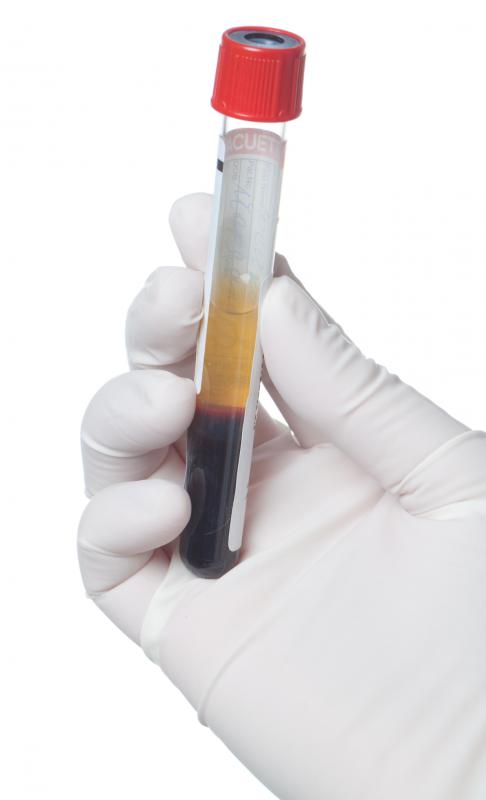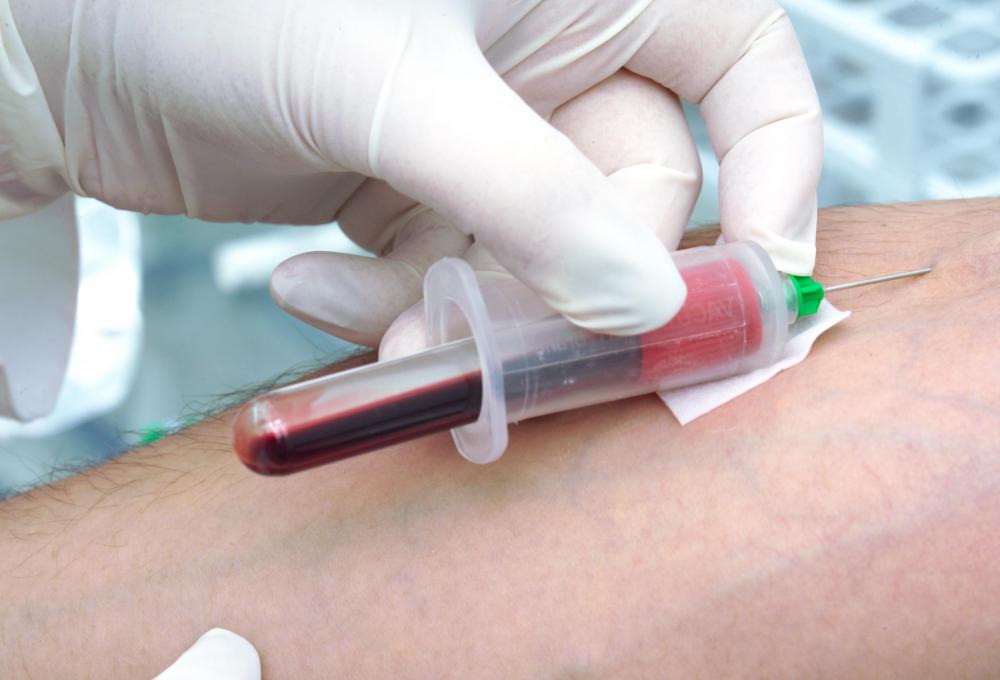At WiseGEEK, we're committed to delivering accurate, trustworthy information. Our expert-authored content is rigorously fact-checked and sourced from credible authorities. Discover how we uphold the highest standards in providing you with reliable knowledge.
How do I get Phlebotomist Certification?
There are three steps necessary to get a phlebotomist certification: post-secondary education, work related experience, and the successful completion of a written examination. A phlebotomist is someone who draws blood from people for blood tests or blood donations. Phlebotomists are also known as venipuncturists.
The level of phlebotomist certification required to obtain a position in this field varies by state. While there are no specific legal requirements, most employers prefer candidates who have completed the certification process. This provides assurances regarding the level of skill, knowledge, and experience.

There are three different associations responsible for phlebotomist certification in the United States. All three have the same core requirements, but vary slightly at the detail level. A phlebotomist certification program is typically four to eight months in length. There are a minimum of 40 hours of course work, 100 clinical practice blood drawings, and a written examination. The course work covers human anatomy, circulatory system, specimen processing and laboratory procedures.

The American Society for Clinical Pathology, The Association of Phlebotomy Technicians and the National Phlebotomy Association all issue certificates that will qualify you for employment opportunities as a phlebotomist. When selecting a training school, check which of these three associations have accredited the program before you register. If it is not accredited by an association, do not attend, as your academic credentials will not be accepted when applying for certification.

All training programs include a clinical practice component. This experience is obtained by working in a hospital, doctor's office, or nursing home. During the practice component, a certified phlebotomist closely supervises the work of the trainee. The supervisor is required to provide a written evaluation at the end of the work term to the program consolidator. This evaluation is part of the student's file.
Upon graduation, all three certification associations require a written examination. The exam covers important concepts and procedures that are necessary to complete the tasks of this job. Upon successful completion of these requirements, a certificate is issued.
Phlebotomist is an entry-level position in the health care industry. After several years, many phlebotomists want to expand their job responsibilities into other areas. In order to make this transition, additional education is required. Some programs, such as laboratory technician certificate, grant credits for courses taken toward the phlebotomist certification.
People who have the greatest satisfaction in this job enjoy working with people, value accuracy, and want to make an uncomfortable process as easy as possible. Many people are very anxious about giving blood or seeing needles. A well-trained phlebotomist can put them at ease and obtain the necessary sample as quickly as possible.
AS FEATURED ON:
AS FEATURED ON:













Discuss this Article
Post your comments